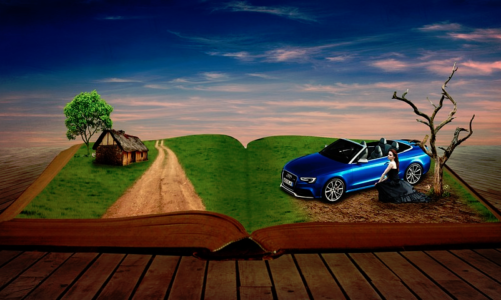The New Wave of Modernism in Literature and Art has been a topic of discussion for quite some time. In the past, this movement was mostly focused on the humanities and art. However, in recent years, it has also been adopted by other fields such as science fiction and fantasy fiction.
The New Wave of Modernism in Literature and Art is an exhibition at the National Gallery of Art in Washington, D.C. It features works by artists such as Jackson Pollock and Willem de Kooning.
With the new wave of modernism in literature and art, we are seeing a shift from the classic to the post-modern. This is a trend that we can expect to continue for at least another decade.
The New Wave of Modernism in Literature and Art is characterized by an increased focus on personal experience, a greater interest in subjective experience, and more emphasis on social issues. It represents a shift away from realism and toward an exploration of emotions, feelings, dreams, and other subjective elements that are not usually considered part of realism.
The New Wave of Modernism in literature and art is a term used to describe the development of new forms of artistic expression. The term was coined by critic Harold Bloom.
The New Wave of Modernism in Literature and Art has been a trend in literature and art since the beginning of the 20th century. It was a reaction to the Romantic period and its emphasis on naturalism, realism, and naturalist themes. This is what made it so popular at the time.
The New Wave of Modernism in literature and art is a movement that started in the early 1960s. It was a reaction against the traditional values of the Western world, which were based on religion and morality.
The New Wave of Modernism in literature and art was a reaction to the traditional values of the Western world, which were based on religion and morality.
This movement was born by artists who felt that there were too many rules in their lives, it forced them to conform to certain expectations. They wanted to break free from this “box” they had been put into. The result is that they created works that are more experimental than ever before.
Modernism is a literary movement that began in the 19th century and continued into the 20th century. It combined different styles and styles of art, music, and design.
Modernism is a movement that has been around for at least a century. It started in the 19th century and reached its peak in the 20th century.
The New Wave of Modernism in Literature and Art is a recent trend in the literary world. Novels, short stories, poems and art works have been adapted to the digital era.
The New Wave of Modernism in literature and art is a movement that was popularized by the French writer, Jean-Paul Sartre. The movement launched in the early 20th century and was inspired by existentialism. This movement aims at emphasizing humanist values over traditional norms.
The New Wave of Modernism in Literature and Art is a movement that started in the late 19th century. It can be defined as a movement that was formed from the reaction to Romanticism and the influence of Impressionism.
The New Wave of Modernism in Literature and Art was created by writers who wanted to create new forms of art and literature. The movement has influenced many other movements such as Postmodernism, Dadaism, Surrealism, Deconstruction, Neo-Expressionist Art, Conceptual Art etc.
With the rise of digital technologies and the internet, it has become easier to access information. This has been a boon for the literary and art world. However, this new wave of modernism has also had its share of problems.
The New Wave of Modernism in Literature and Art is a book by fiction writer Peter Haining that was published in 2016. It is an attempt to describe what makes modernist literature so unique from other genres. The book describes how modernist literature can be defined, what makes it different from other forms of literature, and how it differs from traditional forms of literature like classics or poetry. The book is written as a series of essays on different aspects about the genre including its history, aesthetics, themes, etc.



